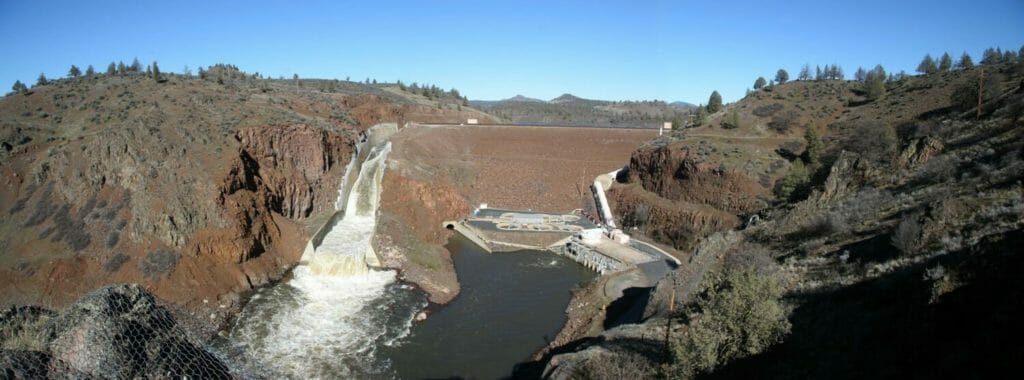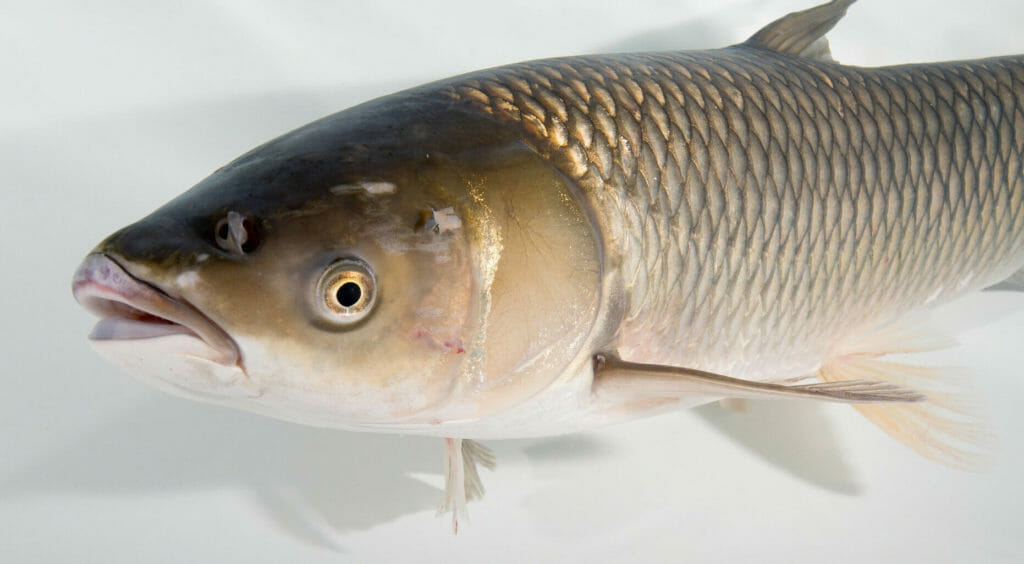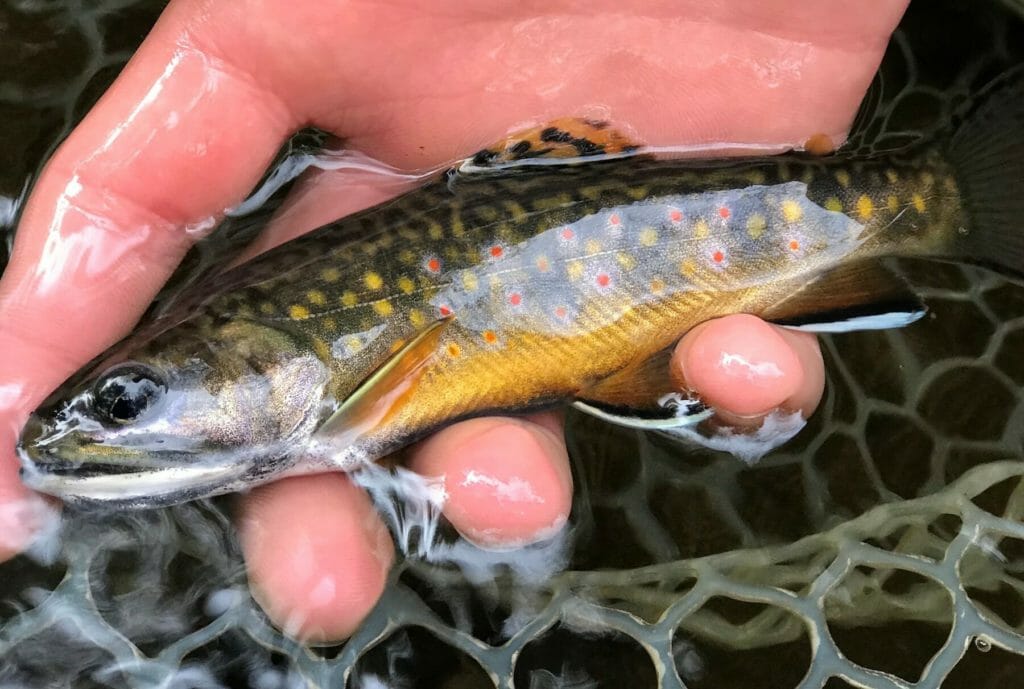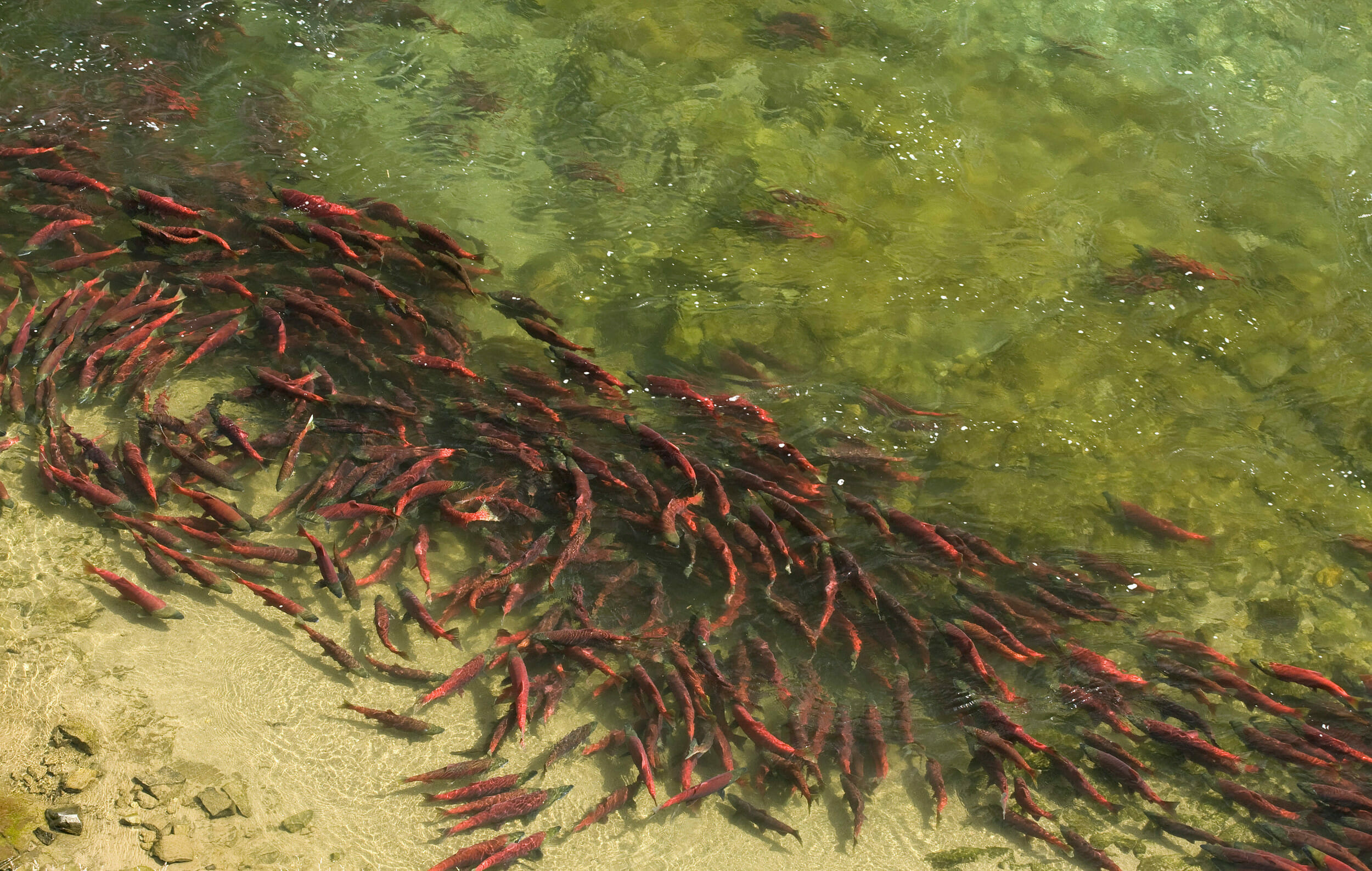Bristol Bay
The clear, cold rivers of the Bristol Bay region in southwest Alaska support some of the strongest remaining salmon runs in North America. These waters entice anglers, tourists and other outdoor enthusiasts from around the globe to view rare and majestic wildlife, marvel at an untouched landscape, and chase trophy rainbow trout and salmon. The region is under imminent threat from the massive proposed Pebble mine. Slated to be the largest open-pit copper and gold mine in North America, peer-reviewed science shows Pebble would singlehandedly and unequivocally harm the fisheries and impact the communities and thousands of fish-based businesses that operate in Bristol Bay. Despite widespread opposition, review of the key federal permit Pebble needs to advance is underway in a process that has been extremely rushed and inadequate.
Thanks in part to the work of Trout Unlimited staff and volunteers across the country, the public took swift action to protect Bristol Bay during the permit application comment period in 2019. More than 685,000 individual comments were filed in opposition to the mine. Despite this overwhelming show of public opposition condemning the mine, the process continues to barrel forward. The U.S. Army Corps of Engineers is currently scheduled to determine whether the permit should be issued within the first six months of 2020. TU staff is poised to meet the challenge and ensure the permit is denied before working toward permanent protections for fish and wildlife of the region.

Klamath Dams
The effort to remove four dams on the Klamath River below Klamath Lake is moving forward. Soon, salmon and steelhead that run up the Klamath River in Northern California from the Pacific will have unfettered access to most of the river, dramatically expanding spawning and rearing habitat, and, in time, giving anglers a great opportunity to fish for legendary ocean-going fish in on the most productive rivers on the West Coast.
Yellowstone Lake
In 2019, National Park Service gillnetters removed just shy of 300,000 invasive lake trout from Yellowstone Lake, a marked decrease when compared to recent years past. This likely indicates that the lake trout numbers in Yellowstone Lake are dwindling, which is great news for native Yellowstone cutthroat trout. Discovered in the lake in 1994, non-native lake trout decimated the native cutthroat trout population in Yellowstone Lake. By 2010, 90 percent of the lake’s spawning cutthroats were gone. But, a concerted effort involving the Park Service and non-profits like TU has enjoyed good results, with native fish on the rebound as non-native trout are netted and killed. Native cutthroats are returning to spawning tributaries, and the Park Service is working to target lake trout and their eggs during the fall spawning season.
Tongass National Forest
The Tongass in southeast Alaska is the largest intact temperate rainforest remaining in the world, and is home to a majestic array of islands, mountains, forests, glaciers, salmon streams, fjords and bays – an angler and recreationists’ paradise. Thanks to painstaking dialogue with agency leaders and participating in a half decade of community driven visioning work, we were on the verge of preventing a complete rollback of protections for the Tongass contained in the national Roadless Rule this summer. Our Alaska team had successfully advanced a sensible compromise with better safeguards for key trout and salmon watersheds while allowing for a limited number of new roads — a compromise with massive conservation benefits. Unfortunately, a conversation between President Trump and Alaska Governor Dunleavy on Air Force One derailed this community-supported solution and instead, a proposal for a complete repeal of the Roadless Rule on the Tongass was released. Trout Unlimited organized thousands of public comments in support of protections for fish and wildlife habitat on the Tongass and secured dozens of news stories stressing the importance of the Roadless Rule to the region. Staff will engage in the process to ensure precious habitat and public lands on the Tongass National Forest are conserved in the coming year.
Snake River dams
Salmon and steelhead populations have steadily declined on the lower Snake River for decades, but in 2019, the effort to recover those populations took a positive turn.
During a closely watched conference in Idaho, Rep. Mike Simpson (R-Idaho) told the gathered audience he intended to see salmon and steelhead return to Idaho in his lifetime, invigorating an effort to bring stakeholders to the table to tackle historically divisive issues, including a proposal to remove four dams on the lower Snake River.
The science shows that dam removal is the most promising solution to recovering this iconic species, but removal alone will not address the larger issue at hand. Trout Unlimited is working to pull together a package of solutions to address other needs in the region such as the ability to get ag products to market, addressing infrastructure needs for irrigators and providing clean, affordable energy well into the future.
Public Lands Bill
Early this year, Congress passed permanently re-authorizing the Land and Water Conservation Fund and protecting millions of acres of public lands.
Among other things, the bill protected 100,000 acres on Steamboat Creek in Oregon with the Frank and Jeanne Moore Wild Steelhead Special Management Area Designation Act, designated more than 250 new miles of Wild and Scenic Rivers in the Rogue, Chetco, Elk and Molalla basins with the Oregon Wildlands Act. It created new wilderness in the Devil’s Staircase in Oregon and placed 340,000 acres of U.S. Forest Service Land in the Upper Methow Valley off limits to large-scale mining.
In Montana, it prohibited new mining claims at the doorstep of Yellowstone National Park and in California it protected about 76 miles of streams with the California Desert Protection and Recreation Act.
Last, in Washington, it granted federal authorizations necessary to advance the Yakima Basin Integrated Plan, a balanced package of actions that will restore hundreds of thousands of salmon and steelhead to the basin, improve water quality and quantity and supports a healthy agricultural and recreational economy.

Great Lakes Asian carp
As invasive Asian carp encroach the Great Lakes, Trout Unlimited has been advocating for measures to stop the fish and avoid the possible devastation to the lakes’ ecosystems and the economy they support.
In 2019, the US Army Corps of Engineers submitted their final recommendation to Congress for addressing concerns about invasive Asian carp reaching the Great Lakes. The plan recommends installing additional barrier protections at the Brandon Road Lock and Dam in Joliet, Ill., including an electric barrier, bubble curtain and acoustic fish deterrent which will be coupled with overfishing practices to reduce invasive populations.
It is now up to Congress to authorize the project for construction and to begin appropriating the necessary funding. Additionally, current appropriation bills include $25 million for Asian carp eradication in the Mississippi river basin and other appropriations report language urges the Corps to being its preconstruction engineering and design. TU will continue to work with Congress to ensure authorization and appropriations to keep invasive Asian carp out of the Great Lakes.
Reintroduction of Paiute cutthroat trout
In 1967 the Paiute cutthroat was listed under the predecessor of the federal Endangered Species Act (the Endangered Species Preservation Act). Since then, it has been the focus of an intensive recovery effort. This decades-long campaign—strongly supported throughout by the Trout Unlimited North Bay (now Golden Gate) Chapter—recently celebrated a major milestone as genetically pure Paiute cutthroat were released back into the mainstem of Silver King Creek on Sept. 18.
Animas River campaign
TU has been leading efforts to clean up the Animas River since well before the Gold King Mine spill and those efforts continue today. Initially organizing a community-driven group to assess the damage left from a long history of hard rock mining and cleaning up waste rock piles has led to a strong partnership with the EPA through the Superfund process now in place at the headwaters of the Animas. Developing the Community Advisory Group (CAG) to help with decision-making, determine goals and desired outcomes and continually educating the communities is where TU shines. With the overall goal of improving habitat and water quality for trout, TU is leading the CAG and recently announced a grant received from local fly fishing retailer Duranglers via Patagonia to continue that important work. Trout can’t live in waters with high acidity, so the work to contain and remediate mine waste from 48 mines in the area is sure to help and anglers will have TU to thank.

Pennsylvania wild trout identification efforts
Since 2011, Trout Unlimited has been working with the Pennsylvania Fish and Boat Commission to find, document and protect wild trout populations. Of the state’s 86,000 miles of streams, less than a quarter had been formally surveyed for wild brown and brook trout when the collaborative effort began.
Using electrofishing gear, TU crews have surveyed hundreds of streams, confirming populations of wild trout in about 40 percent of those waters. Waters where trout are found are then considered for formal inclusion on the state’s formal list of wild and Class A trout waters, designations that can afford special projects. Hundreds of streams have been formally designated as a result of the effort.
TU members and supporters have played a key role by supporting those formal designations. In 2019 alone, TU members submitted more than 1,000 public comments in support of 337 freshly documented wild trout streams. Thanks to work by TU staff and volunteers over the past decade, the Keystone State boasts more than 16,000 officially recognized and protected miles of wild trout water.
Honorable mention:
- Ruby Mountains, Nevada: TU is spearheading an effort to protect the signature mountain range of the Silver State from irresponsible oil and gas drilling.
- Eklutna River, Alaska: The Eklutna River near Anchorage, once a thriving salmon fishery, has been greatly diminished by inadequate water flows from hydroelectric projects. We are working to bring salmon back in greater numbers by returning water and improving habitat to the river. In 2019, we completed key public education work in Southcentral Alaska and built relationships with the Native Village of Eklutna and other key partners to help us achieve our goal of creating a healthy and productive future for the Eklutna.
- Native fish reintroductions in the Southwest: Efforts to restore native fish habitat are alive and well in Colorado and New Mexico. While introducing native Rio Grande cutthroat trout in the Great Sand Dunes National Park and Preserve saw a slight delay this year, efforts in New Mexico are well on their way with much more to come in 2020.
- Colorado River water management and fish passage: TU is leading the charge on the Colorado Water Plan’s Stream Management Plans and has involvement with plans currently under way on the Yampa, Blue, Eagle, Middle Colorado, Upper Gunnison, Uncompahgre, San Juan, Rio Grande, San Miguel, South Platte, Upper Cache la Poudre, St. Vrain, and South Boulder Creek. That covers nearly every corner of the state and will help determine how best to manage each of these important Colorado River tributaries. And with the potential for more funding through the passing of Proposition DD this November, more good work can happen. In addition, TU has been working to improve fish passage in Flat Tops tributaries to the Colorado River, completed the Ware and Hinds fish passage on Elk Creek outside of Newcastle and is currently working on the I-70 culvert at the mouth of Canyon Creek in the same area. More planning around projects such as these is also in the works with the goal of helping fish move more freely along Colorado River tributaries.
- Driftless Area: Over the past 15 years, Trout Unlimited and its partners have improved habitat on hundreds of stream miles on many of the region’s 600 spring-fed creeks. The work has not only greatly improved fishing opportunities, but has made the streams more resilient to damage from flooding that is becoming more frequent and severe.
- Southern Appalachia reconnection work: TU is partnering to the U.S. Forest Service to reconnect fragmented habitat by removing barriers. The work will help address the threats posed by the genetic isolation that can result from fish being restricted to small habitat patches.
- Salter Brook Trout: Along Maine’s coast, volunteers continue to help search for and document populations of wild brook trout that move between freshwater and saltwater. Efforts are underway to remove barriers in a stream in Freeport to open up additional habitat to the unique fish.
- New Home Rivers Initiative on the Battenkill: In late 2019 TU launched its newest Home Rivers Initiative, on the Battenkill River in New York and Vermont. The program will help continue the management changes and habitat improvements on the Battenkill that have brought that fishery back from the brink of collapse. TU recently completed a watershed assessment to identify the next round of improvements that will keep the fishery on its upward trajectory.
- Susquehanna success: From 2005 to 2018 TU spent $1.4 million on its abandoned mine technical assistance program in Pennsylvania. The initial investment helped to leverage more than $13 million in implementation funding and has been a significant component of the 216-mile increase in trout water in the West Branch Susquehanna basin where streams had previously been killed by mine pollution.
- Technical assistance in the East: In order to leverage TU staff’s expertise, we have expanded our technical assistance efforts, formalizing consultation programs for partners in Pennsylvania and New England. In just two years, TU has consulted on hundreds of projects in Pennsylvania alone, helping to further expand TU’s footprint of restoration.



